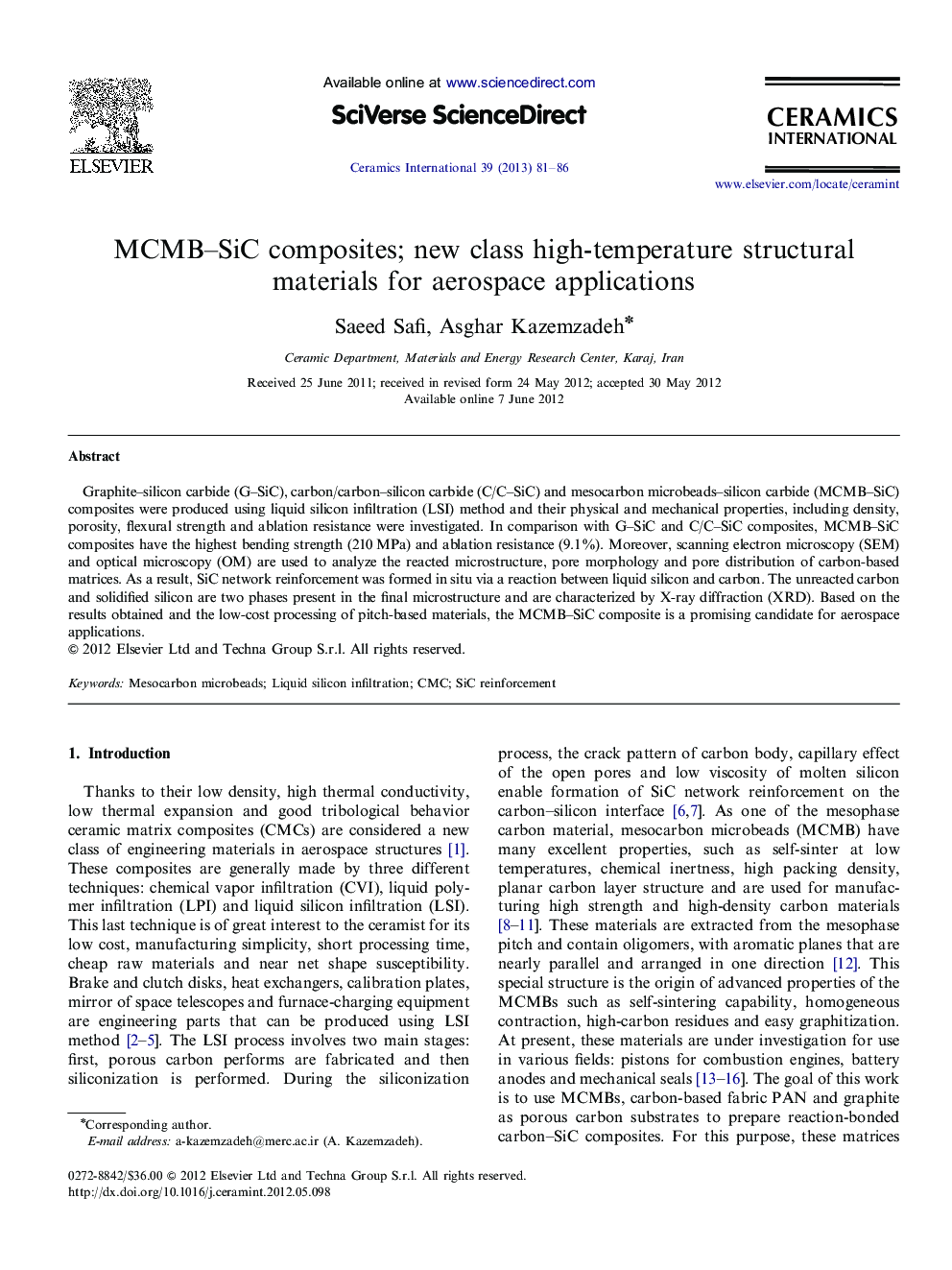| Article ID | Journal | Published Year | Pages | File Type |
|---|---|---|---|---|
| 1463436 | Ceramics International | 2013 | 6 Pages |
Graphite–silicon carbide (G–SiC), carbon/carbon–silicon carbide (C/C–SiC) and mesocarbon microbeads–silicon carbide (MCMB–SiC) composites were produced using liquid silicon infiltration (LSI) method and their physical and mechanical properties, including density, porosity, flexural strength and ablation resistance were investigated. In comparison with G–SiC and C/C–SiC composites, MCMB–SiC composites have the highest bending strength (210 MPa) and ablation resistance (9.1%). Moreover, scanning electron microscopy (SEM) and optical microscopy (OM) are used to analyze the reacted microstructure, pore morphology and pore distribution of carbon-based matrices. As a result, SiC network reinforcement was formed in situ via a reaction between liquid silicon and carbon. The unreacted carbon and solidified silicon are two phases present in the final microstructure and are characterized by X-ray diffraction (XRD). Based on the results obtained and the low-cost processing of pitch-based materials, the MCMB–SiC composite is a promising candidate for aerospace applications.
